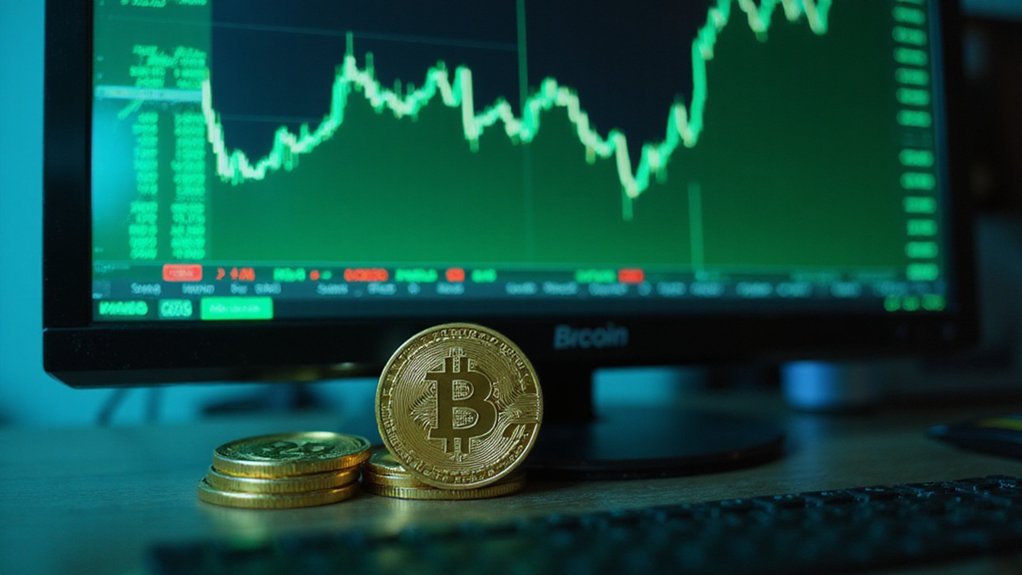KuCoin Exchange offers crypto novices a streamlined entry point with simple registration and robust KYC protocols. The platform’s architecture—requiring transfers between main and trading accounts—might seem superfluous but serves critical segregation purposes. Beginners benefit from stablecoin trading pairs before exploring more volatile options, while two-factor authentication (the bare minimum in this hacker-prone landscape) safeguards assets. P2P markets and lending options round out a surprisingly extensive ecosystem for those brave enough to wade into digital asset waters.

Why do novice traders often find themselves adrift in the cryptocurrency ocean when a well-structured platform like KuCoin offers a thorough ecosystem for beginners and veterans alike?
The exchange—which has steadily gained prominence amid the cacophony of crypto platforms—provides a remarkably straightforward onboarding process, beginning with a simple registration requiring only an email address or phone number.
Amid crypto’s chaotic landscape, KuCoin stands out with its effortless onboarding—demanding nothing more than basic contact details to begin your trading journey.
The initiation ritual continues with the creation of a robust password (surely more complex than “Bitcoin123”), followed by KYC verification—that unavoidable regulatory hoop through which all compliant traders must jump.
This verification process, requiring government ID and a selfie that one hopes won’t resurface elsewhere on the internet, enables the platform’s full functionality and deposit capabilities.
Navigating KuCoin’s deposit landscape requires attention to detail, particularly when transferring cryptocurrencies.
The selection of the correct network—ERC20 versus TRC20, for instance—can mean the difference between successful fund receipt and an anxiety-inducing void of missing assets.
Funds, once safely deposited into the main account, must then be transferred to the trading account (a distinction that confounds many newcomers but serves important segregation purposes).
KuCoin’s trading dashboard presents a thorough interface where users can access spot markets, futures trading, and various other crypto-based financial products.
Beginners typically cut their teeth on stablecoin trading pairs (USDT being the perennial favorite) before venturing into more volatile waters.
Security measures permeate the platform’s architecture, with two-factor authentication standing as the minimum prudent precaution. For those concerned about potential misconduct, KuCoin maintains a comprehensive whistleblower program where users can report theft of assets or other violations to maintain platform integrity.
Unlike Coinstore which offers access to 500+ cryptocurrencies for traders of all experience levels, KuCoin provides a more curated selection of digital assets.
The exchange regularly updates its security protocols—a necessary evolution in an industry where hackers seemingly work overtime.
Additional features include P2P markets for fiat transactions, lending options for passive income generation, and the native KCS token, which confers certain privileges—though whether these advantages justify holding yet another token in one’s portfolio remains an individual calculation.
Educational resources round out the offering, providing neophytes with the knowledge necessary to navigate cryptocurrency trading without sacrificing their financial future at the altar of FOMO.
Frequently Asked Questions
How Does Kucoin’s Security Compare to Other Major Crypto Exchanges?
KuCoin’s security architecture parallels industry leaders with multi-factor authentication, withdrawal whitelisting, and cold wallet storage.
Its SOC 2 Type II certification signals robust protocols, and its insurance backing offers additional protection.
However, the exchange’s 2020 breach ($281 million lost) and regulatory challenges somewhat tarnish its security reputation compared to more compliant exchanges like Coinbase.
Post-breach, KuCoin greatly enhanced its defenses through partnerships with Onchain Custodian and Lockton for improved safeguarding measures.
What Are Kucoin’s Withdrawal Fees for Different Cryptocurrencies?
KuCoin’s withdrawal fees vary greatly by cryptocurrency and network conditions.
Bitcoin and Ethereum fees fluctuate based on network congestion, while altcoins like Litecoin typically incur lower costs.
The exchange regularly adjusts these fees—sometimes quite dramatically—in response to market volatility and blockchain activity.
Fiat withdrawals are more predictable: 1 EUR for Euro transactions and either 5 or 25 GBP for Pound withdrawals, depending on the method.
Users should consult KuCoin’s fee schedule for current rates.
Can I Use Kucoin in Countries With Crypto Restrictions?
Technically, no. KuCoin is explicitly restricted in several jurisdictions including the US, mainland China, Hong Kong, Singapore, Thailand, Malaysia, and Ontario (Canada) due to regulatory non-compliance.
While some users attempt to circumvent these restrictions via VPNs—NordVPN being a popular choice—such practices typically violate both local regulations and KuCoin’s terms of service, potentially resulting in account suspension or asset freezing.
The prudent approach? Seek alternative exchanges legally operating within one’s jurisdiction.
How Long Do Kucoin Customer Support Tickets Typically Take to Resolve?
KuCoin support resolution times vary by issue complexity.
Standard tickets typically receive responses within 24 hours, though appeal-specific matters may take up to 12 hours for initial contact.
Complete resolution depends on several factors: evidence submission (expedited when users provide thorough documentation), the nature of the dispute, and parties’ response times.
The platform’s AI chatbot offers instant assistance for basic inquiries, while complex cases requiring human intervention naturally demand more patience from users.
Does Kucoin Offer Tax Reporting Tools for Traders?
KuCoin itself doesn’t provide dedicated tax reporting tools, instead opting for third-party integrations with specialized platforms like Koinly, CoinLedger, and TokenTax.
These services enable traders to calculate gains, losses, and income while generating compliant tax forms through CSV or API data uploads.
The exchange’s absence of direct IRS reporting places the compliance burden squarely on users’ shoulders—a curious arrangement given the regulatory scrutiny crypto faces in jurisdictions worldwide.









